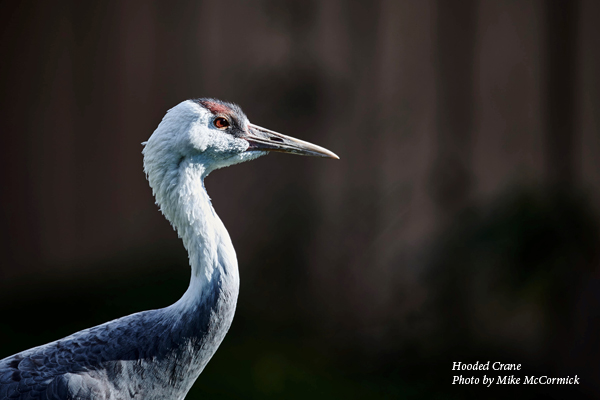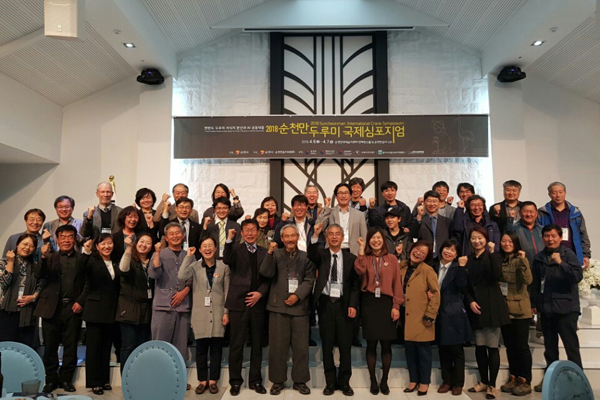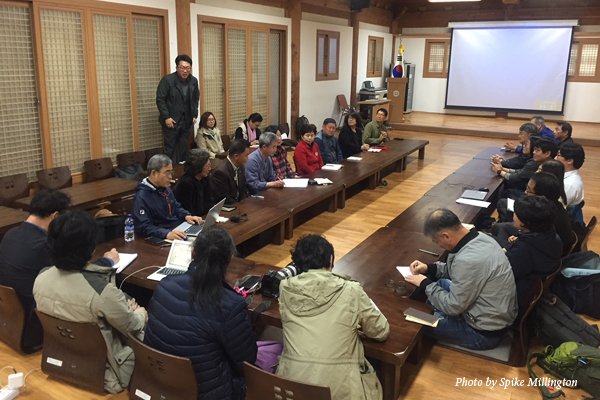
Across Asia, the number of poultry farms, both industrial and small-scale, has expanded rapidly in recent years. The conditions in which poultry are raised in close confinement and often poor sanitary conditions have resulted in periodic outbreaks of different strains of avian influenza. The response usually involves culling of poultry at affected farms and strict controls on movement and transport of birds to surrounding areas to contain the spread of the disease. Strict biosecurity at farms is recognized as the key approach to address this threat. Wild birds, particularly migratory waterbirds, including cranes, are also the victims of poor biosecurity measures and are susceptible to infection by highly pathogenic strains of avian influenza, as they often inhabit wetlands in close proximity to poultry farms.
Korea is no exception to this, with thousands of chicken and duck farms throughout the country. Outbreaks of avian influenza, at varying scales, are annual and sometimes widespread in the country. As occasionally elsewhere, there are attempts to blame wild birds for the spread of avian influenza, together with misguided policies to disinfect wetlands and disturb wild birds in wetlands. Agricultural authorities, perhaps in order to be seen as “doing something” often order the closing of wetlands to tourists and birdwatchers. Of course, the threat posed by visitors, except in the unlikely event they have traveled from infected farms, is minimal and also limits the possibility that such visitors could report dead or dying wildfowl.
In areas such as nature reserves that depend heavily on visitor revenue for managing these areas and protecting migratory waterbirds, closure for long periods can have a significant negative impact on tourism revenues. Suncheon Bay is one example that has suffered from this policy. It supports over 1,000 Hooded Cranes and has made considerable efforts to conserve these birds, including placing power lines underground and engaging local schools.

From April 5 to7, 2018, Suncheon City hosted an International Crane Symposium to address the threats and responses to avian influenza along the Eastern Flyway. I participated in the symposium and gave the keynote speech on the role of the Korean peninsula in crane conservation. We also signed a Memorandum of Understanding with the Vice Mayors of Suncheon City, Cheorwon County and Goyang City to address the threats and responses to avian influenza and to work together to disperse large concentrations of cranes to minimize disease risks. Representatives from China and Japan also gave presentations at the symposium. The large concentrations of cranes at Izumi in Japan occur in an area of intensive chicken farming, but measures are in place to control the threats and closures are not foreseen.

The symposium generated a great deal of discussion and highlighted the importance of international cooperation to protect populations of migratory cranes along the Eastern Flyway, including risk reduction to large concentrations of cranes where supplemental feeding is in place.
Closer to home, the International Crane Foundation has been a leader since 2005 in developing its own biosecurity measures to prevent avian influenza at the International Crane Foundation and to engage with Wisconsin Department of Animal Health officials in modeling good biosecurity for zoological collections. The was most relevant in 2015 with outbreaks in poultry throughout the Midwest, including Wisconsin. These lessons and our expertise in bird health are the backbone of recommendations we can bring to conferences such as the one in Korea.
 Story submitted by Spike Millington, Vice President International – Asia. Click here to learn more about our work in East Asia.
Story submitted by Spike Millington, Vice President International – Asia. Click here to learn more about our work in East Asia.
